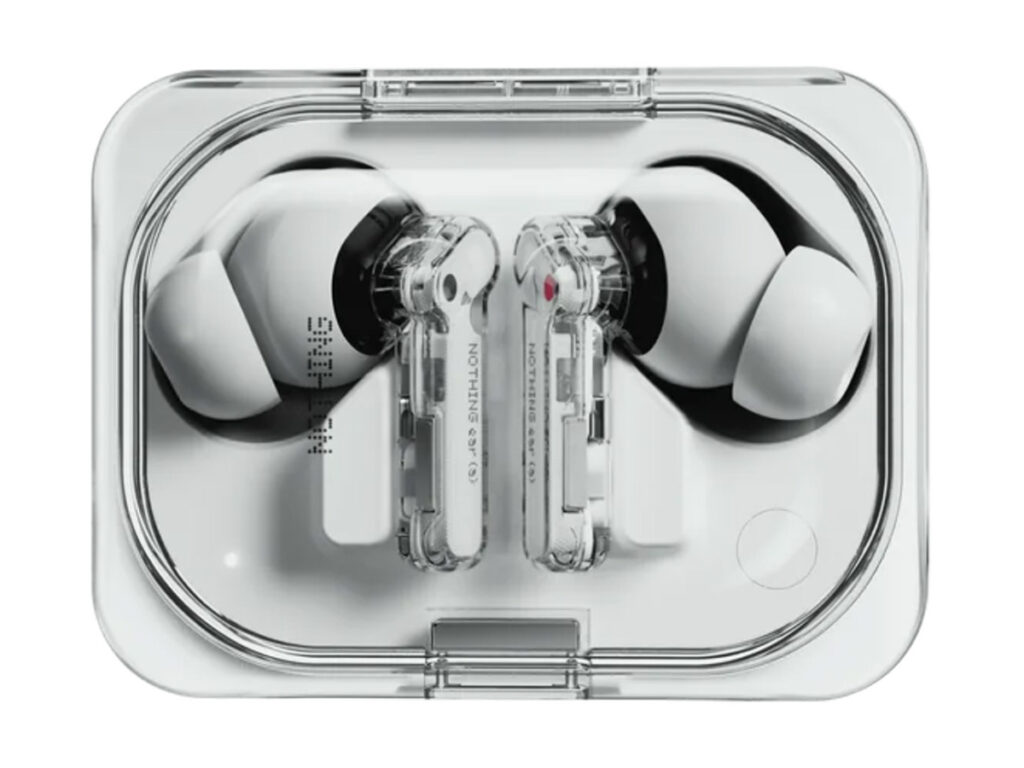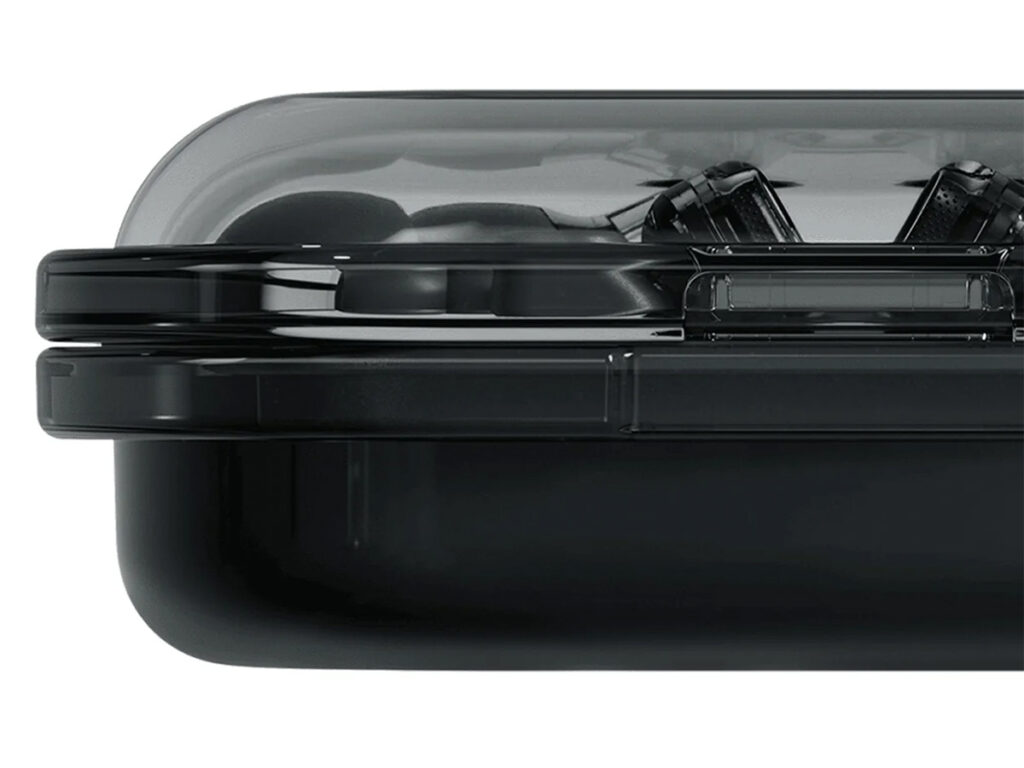Quick Take: The Nothing Ear(a) represents the latest from Nothing, a startup audio company known for a focus on interesting design using quality materials. The Ear(a) brings high definition audio and adequate battery life, but still needs improvement to meet competitors at a similar price point.

Jason Yang
Editor, WearablesWHERE TO BUY
Gigabeat provides unbiased editorial style product reviews to help you make a more informed purchase decision. When you buy from links featured on our site, we may earn a commission.
- $219.00 AUD at Amazon.com
The Nothing Ear(a) wireless earbuds enter the competitive market of personal audio solutions with a unique design and robust features. This extensive review will explore their capabilities, compare them with industry giants like Apple, Samsung, and Google, and help determine if they meet specific listening needs.
Design and Aesthetics
The Nothing Ear(a) continues the brand’s ethos of eye-catching design with its transparent casing and futuristic look. Weighing just slightly over their predecessors, these earbuds are designed for comfort and prolonged use. Each earbud is marked with subtle dots for identification; red for right and no mark for left, adding a minimalist yet practical touch.

Pros:
- Lightweight Design: Comfortable for extended periods, ideal for long commutes or extended listening sessions.
- Distinctive Transparent Case: Stands out in a market where most competitors opt for opaque or solid color designs.
Cons:
- Case Design: Some might find the case less practical than traditional designs, as its unique shape can be less stable when placed on flat surfaces.
Audio Performance
The Nothing Ear(a) is equipped with dynamic drivers that deliver a balanced sound profile. The audio quality is designed to cater to a wide range of musical tastes, providing clarity and a decent level of bass.
Pros:
- Balanced Sound: Clean and clear audio experience suitable for various music genres.
- Active Noise Cancellation (ANC): Adjustable ANC can be tailored to the environment, effectively blocking ambient noise.
Cons:
- Codec Support: Limited support for high-resolution audio codecs which may deter audiophiles looking for the best sound quality over Bluetooth.
User Interface and Control
The touch controls on the Nothing Ear(a) are responsive and customizable through the accompanying app, allowing users to adjust settings to their preferences, enhancing usability.

Pros:
- Customizable Controls: Adjust touch controls to improve the interactive experience.
- Responsive Touch Interface: Minimizes errors during use, allowing for smoother operation.
Cons:
- Learning Curve: New users may initially find the touch controls tricky to master.
Battery Life and Charging
The earbuds offer competitive battery life suitable for most users under normal conditions. The charging case provides additional charges, extending total usage significantly between plug-ins.
Pros:
- Improved Battery Life: Provides around five hours of playtime with ANC enabled, with additional power provided by the charging case.
- Fast Charging: Ensures the earbuds are quickly ready for use.
Cons:
- Battery Drain with ANC: Activating ANC significantly reduces battery life.
Comparison with Competitors
The Nothing Ear(a) holds its own against products from Apple, Samsung, and Google, particularly in design and user interface. However, it may lag slightly behind in terms of integration within broader ecosystems. For example, Apple’s AirPods offer seamless integration with iOS devices, which might be more attractive for iPhone users. Samsung’s Galaxy Buds and Google’s Pixel Buds also provide better integration with their respective device ecosystems.
Suitability and Target Audience
The Nothing Ear(a) is particularly suitable for tech enthusiasts who appreciate design innovation and reasonable sound quality. They are also a good choice for consumers looking for functional, stylish earbuds that stand out visually and perform well in everyday scenarios.

Final Recommendation
The Nothing Ear(a) earbuds are recommended for users who prioritize unique design and effective noise cancellation. They offer good value in the competitive wireless earbud market. However, potential buyers should consider other options if they require superior audio codec support or deeper integration with existing devices and ecosystems.
Questions and Answers
Are the Nothing Ear(a) earbuds compatible with all smartphones?
A: Yes, the Nothing Ear(a) earbuds are compatible with both iOS and Android devices, although they may offer better functionality with certain devices.
Can the Nothing Ear(a) be used for making calls?
A: Yes, they are equipped with multiple microphones and clear voice technology, ensuring clear call quality even in noisy environments.
Is there an app to control the Nothing Ear(a) features?
A: Yes, the Nothing X app allows users to customize settings, including the equalizer, touch controls, and check battery levels.
How does the ANC on Nothing Ear(a) compare to other leading brands?
A: The ANC is effective for everyday use, though it may not be on par with top-of-the-line models from Bose or Sony that are specifically designed for noise cancellation.
What is the charging time and battery life of the Nothing Ear(a)?
A: The earbuds offer up to five hours of playback with ANC on, and the case provides additional charges. They can be fully charged in about an hour.
In summary, the Nothing Ear(a) wireless earbuds represent a solid middle ground in the market of personal audio devices. They combine distinctive design with capable technical features, standing out particularly for their style and active noise cancellation. While they face stiff competition from established brands, they hold their own by offering a unique aesthetic and a user-friendly experience at a competitive price. For those drawn to their design and specific features, the Nothing Ear(a) could be a worthy purchase. However, those requiring deep integration with specific mobile ecosystems or the absolute best in audio quality might look towards more specialized offerings from Apple, Samsung, or Google.
